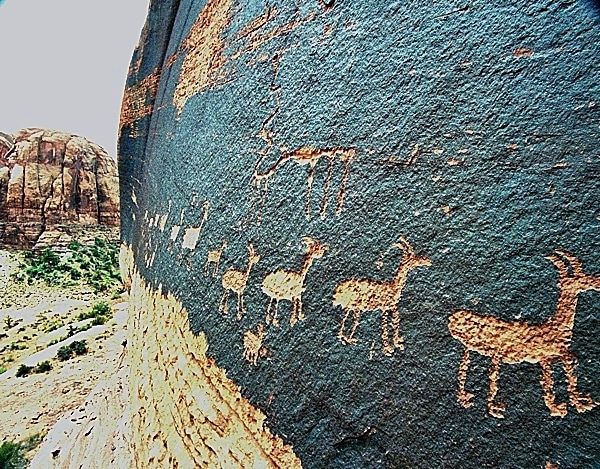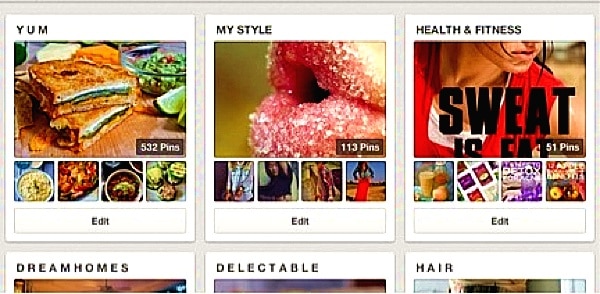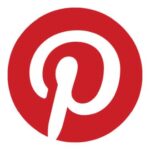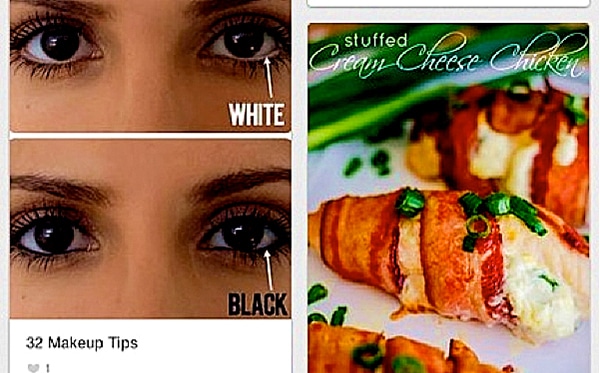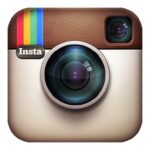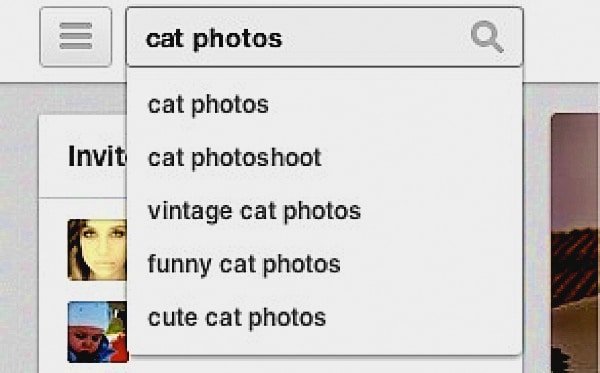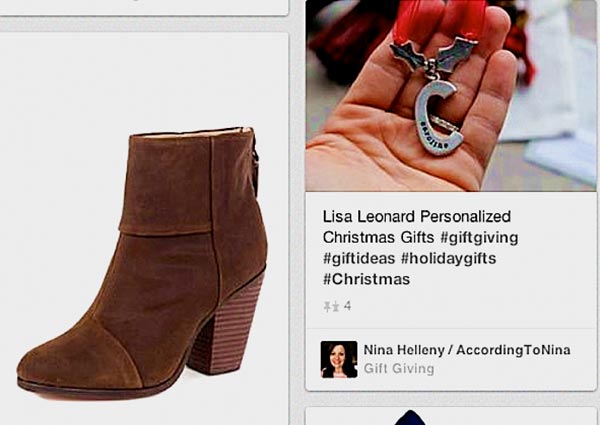AIMCLEAR‘s coverage of SMX Social 2013 continues with the awesome visually and content-rich session, You Oughta Be In Pictures: Close Up With Pinterest, Instagram & Flickr. As we are well aware by now, we are living in a hyper-visual world, and the importance of images continues to grow. In this session, we learned about marketers’ and brands’ strategies for creating visually captivating collateral to reach their target audiences. Speakers Apu Gupta, CEO of Curalate, Matt Siltala, Founder of Avalaunch Media, and Sharad Verma, CEO of Piqora, share best practices for a successful image strategy in today’s photo based world.
First up, Apu begins by saying we have all come full circle in this world. Just like in prehistoric times, we are once again communicating with images. It’s no surprise that we share 400,000,000 images daily on Facebook, Tumblr, and Instagram alone. He goes on to say that now consumers want “snackable ” content and images are consumers favorite snack. Images drive emotions and emotions drive reactions. This results in images driving awareness, engagement, affinity, and revenue.
Consumers communicate not only in social channels, but they cross-share content in them as well. What someone sees on Pinterest may be shared on Twitter, or someone might share a YouTube video they love on Facebook. Without a doubt, your brand’s images follow consumers all over the web.
Images primarily come from two sources: brands and fans. Apu goes on to discuss a few case studies about how brands and fans interact for successful engagements. Understanding the customer’s journey can be pretty insightful – from the moment they come across something they aspire to have in their closet, to the celebration when they make the purchase. It’s important for brands to understand the behavior of their consumers and to be present where their consumers already exist across these social visual channels.
Urban Outfitters decided to post user generated images on their website. They asked people to use a specific hashtag (#U0onYou) to show off their best looks for a chance to be featured on their site. Apu shared a story about a woman who saw herself on the website and tweeted that she was so excited her photo made the cut. She went on to say that Urban Outfitters is her favorite store and sang their praises. Smart move, Urban Outfitters! You can’t buy brand affinity that deep.
To sum it up, don’t just listen. Observe what you’re pushing out to your fans, and pay attention to how your fans react. What do they actually care about? Most of the conversations are originating from what your fans are finding themselves organically.
Up next was Matt Siltala, talking about the direction in which social is headed. Images get 50% more interaction than other content, 10X more shares than links, and 7X more likes. We all need to think ahead to how we can integrate photos into our strategy. Try to use an image with every description; whether you are trying to sell something or share content, don’t just have a block of text because no one likes that, people are drawn to images. Matt also urges us to check out what big brands are doing to possibly get some ideas of what to do for your own brand or for clients. We then move on to Pinterest, where Matt shares some stats and recommendations that if you are not doing already… you really, really should be.
Pinterest had 4000% growth in the last year alone, and 80% of pins are re-pins. If you are a brand and sell a product or service, start to upload your own original pins. It’s also important to re-pin other content, specifically non-competitive 3rd party content to supplement your own boards.
First of all, if you are a business, you should create a business account, not a personal profile. Also, make sure your images are optimized for Pinterest:
- Use high quality, big beautiful imagery.
- Try adding some text to your own images to make your pins look extra eye-catching.
- There are a lot of stats out there that show taller pins get more re-pins.
- Show off your products in context; don’t just show the product shot. People want to see the product in use!
Other creative ideas to try on Pinterest:
- Create checklists that people can actually use: bucket lists, spring cleaning checklists, etc.
- Get in the gifts category. If you put the $ sign on product pins, you can get listed in the gift category.
- Add the follow & Pin It Button to your website.
- Tie your Pinterest account to your other marketing efforts. Matt uses an example from the brand Nilla, who promotes their Pinterest account on their boxes.
- Link to specific Pinterest boards on your website.
- Share your best performing pins on Twitter, Facebook and Google+, invite people to pin it and give them a direct link to the pin. Or even promote a “pin of the day!”
- Use keywords in the profile description, board names/description, and pin description. You can rank in Google for your profile, boards, and individual pins.
End scene. Next, Matt talks a bit about Instagram. First, he shares more awesome stats. Facebook purchased Instagram for $1 Billion and now they have 100 million users. The channel gets 575 likes and 81 comments per second, and 1,278,915 photos were posted of Hurricane Sandy during the storm. Those are certainly eye-opening statistics!
Next, we segway into a case study about a modern boutique startup that sells women’s fashion. They attribute 90% of revenue to Instagram. Their first month’s revenue was $5k and they got over 10k followers in 60 days. They used a lot of lifestyle shots – people actually wearing their clothing, and they also listed prices, highlighted discounted prices and gave discount codes.
They found that the best times to post on Instagram are early mornings, evenings and late at night after 9:00 PM. They would often get purchases within minutes of posting. Try and test with your own consumer base and see when people are most active. Keep in mind if your brand is global, you will likely have to reevaluate and take the time differences into account.
Matt shared that 90% of info submitted to the brain is visual and images are processed 60,000x faster than text. Need we say more?
The big question Matt addresses is how do businesses succeed using visuals in social media? It’s important to start with what is already working for you. Use your social media assets. Tweet about it a lot, and then tweet some more. Of course, share it on Facebook, Google+, and wherever else your brand is present.
Matt shares a case study about Social MEowDIA. They created a really sweet infographic that explains what certain social media channels are known for and incorporate awesome cat themes. (i.e. Facebook, “I like my cat” Instagram, “Here’s a hipster picture of my cat.”) If you haven’t seen it, check it out! It’s pretty purrrfect. The infographic was extremely successful and got a lot of attention. Because this infographic performed so well, they decided to repurpose what was already working for them. From this infographic they made another one about dogs, and even red necks. Heck, they even created eBooks. Matt mentions the latest trend is headed towards interactive graphics, so keep your eyes peeled or get ahead of the crowd and try them yourself! Going visual could have some huge benefits for you, so don’t hold back.
Last up to the stage was Sharad Verma, discussing how the web is fundamentally shifting to self-selected social-visual streams, not webpages. Consumers are shifting from the text web to the visual web. The visual web is comprised of many different networks such as social networks, niche visual networks like Houzz.com, mobile networks like Vine or Instagram, and e-commerce networks like Fancy or Wish.
Visual networks differ from Facebook in a few different ways. Pinterest, Instagram, and Tumblr use the interest graph and are highly viral, organic, and inter-connected. Facebook, however, uses the social graph, is brand driven, and is mainly about personal relationships.
Next, we get into some stats about Pinterest, Instagram, and Tumblr.
Pinterest has 70+ million users, $0.78 revenue per pin, and consists of 90% organic pinning. Instagram has 150+ million users, 16+ billion photos, and 1+ billion likes. Tumblr has 225 million monthly visits, 118+ million blogs, 53+ billion posts, and 80+ million posts per day.
If you think about it, Pinterest is really the Google of the visual web. I can’t tell you how many times I have gone to Pinterest to search for something I am looking for over Google lately. If you haven’t done so already, the next time you are searching for something, type it into Pinterest and see what kind of results you get. You may be surprised what you find. 🙂
Sharad shares a case study with us and found that in a sample of retailers 3 months before and after rich pins came out, there was an 82% jump in re-pins for rich pin brands. Also, 50% of visits happen after 3.5 months of first pinning and 50% of the orders happen after 2.5 months of pinning.
Here are a few ways to optimize your website for Pinterest:
- Implement the pin-it button to your website
- On-hover pin-it button
- Have a pin-it call to action above the fold
- Add the pin-it button on your mobile site
- Implement rich pins
Sharad goes on to share another case study about a jewelry brand that generated 34% of orders through their board pins. They did this by keeping their boards full of fresh new images of products currently in stock, making sure to have a healthy mix of product pins that lead to their website products pages, and using keyword rich pin descriptions for SEO purposes. Doing that helps their pins be seen by more people searching for a particular term.
Here are a few tips on optimizing your Pinterest profile:
- Pin often throughout the day to make sure your pins are being seen by various visitors during the day.
- Use keywords from Google Analytics to select popular board topics and make sure to use those keywords in your board descriptions and pin descriptions.
- Make friends, and convert your site pinners into followers by engaging with their content too.
- Think about using Pinterest as a focus group for your brand. See what is working, what people are pinning most, and learn from that to be more successful.
And now, for the top 5 Pinterest recommendations from Sharad:
- Visually merchandize your website with trending pins. Provide your audience with a visual discovery experience around your highly relevant and social trending products.
- Connect with Pinners through email. If you have a list of email addresses, you can market to them and ask them to follow you on Pinterest. Make sure your email blast is visually appealing with specific product pins or boards you recommend your audience follow.
- Pick the best time to pin. Do some research and find out what time pinners engage with your content. Is it early in the morning, or late at night? Who is your audience and what are their daily schedules like?
- Try building your community through selective, seasonal, and authentic contests.
- Product pins turn pinners into shoppers.
It is important to be a master within your visual networks. Remember these key tips.
- Use hashtags in your pin descriptions and board descriptions. Hashtags help to promote content, discoverability, and social engagement.
- Run contests
- Post often
- Identify your influencers
- Measure ROI
- Run email marketing campaigns
You may be asking yourself, “the title of this presentation says Flickr, but there was no talk about Flickr, what the heck?!” The answer is, when they were looking for speakers no one proposed to talk about it. They all made it clear that they had nothing against the social channel at all. With that awesome info, it was time to wrap it up and open the floor to audience questions.
Thank you to Apu, Matt, and Sharad for an amazing session packed with awesome information and visually captivating presentations! Stay tuned for even more coverage from SMX Social!

